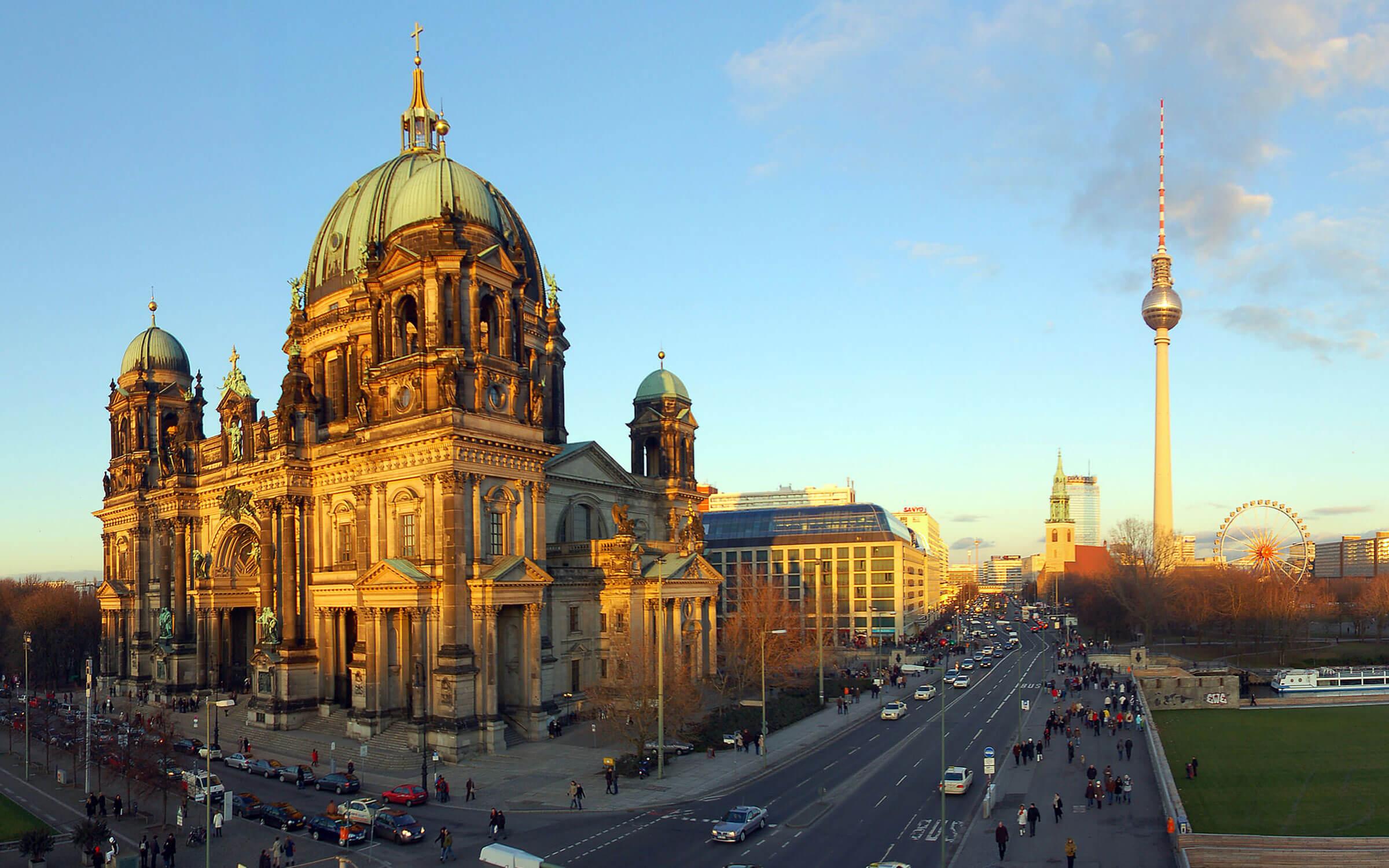If you love art, architecture and history, you’re in for an amazing experience. The history of the Second World War remains very much a part of Berlin. Today, as two generations of pent-up creative energy continue to be unleashed, it is one of the most dynamic cities in the world. Ever-changing and evolving, there are plenty of things to do in Berlin for everyone. Below, a few of our favourites.
The Berlin Wall

The iconic Berlin Wall—put up in a single night in 1961—introduced a new and cruel reality that rapidly acquired a sense of permanence. The city’s centre of gravity shifted as the Wall cut off the historic centre from the west, suspending the Brandenburg Gate and Potsdamer Platz in a no man’s land, while the outer edge followed the 1920 city limits.
Little of the Berlin Wall remains today, most of it having been demolished between June and November of 1990. What had become the symbol of the inhumanity of the East German regime was prosaically crushed and re-used for road-fill.
Checkpoint Charlie Museum
Perhaps a little tacky, this private museum is nonetheless essential for anyone interested in the Wall and the Cold War. It opened not long after the German Democratic Republic erected the Berlin Wall in 1961, with the purpose of documenting the events that were taking place. The exhibition charts the history of the Wall and gives details of the ingenious and often hair-raising ways people escaped from the East to the West.
The Berlin Museumsinsel (Museum Island)

A must-see, this self-contained museum complex in the centre of Berlin lies at the northern point of the Spreeinsel (Spree Island). Exhibits include late Antique and Byzantine art, a painting gallery, a coin collection, a collection of antiquities, a Near Eastern museum, a museum for Islamic art, European art of the 19th century, an Egyptian museum and a museum for pre-and early history:

The Bode Museum
Located on the island’s northern tip (and pictured above), the Bode Museum opened in 1904 (under the name of the Kaiser-Friedrich-Museum). Today it features sculpture collections and late Antique and Byzantine art.
Altes Museum (Old Museum)
This was the first part of the complex and was built by Karl Friedrich Schinkel in 1830.
The Neues Museum (New Museum)
Finished in 1859 under the direction of Friedrich August Stüler, a student of Schinkel, the museum was destroyed in WWII. It was later rebuilt and re-opened in 2009.
Alte Nationalgalerie (Old National Gallery)
The Old National Gallery reopened in December 2001, after three years of careful restoration. With its ceiling and wall paintings, it provides a sparkling home to one of the largest collections of 19th c. art and sculpture in Germany.
Pergamonmuseum
One of the world’s major archaeological museums, the Pergamon should not be missed. (Note that the museum is currently undergoing a significant renovation and will be closed until 2023. More info here.)
Fernsehturm on Alexanderplatz
Built in the late 1960s at a time when relations between East and West were at their lowest point, the 365 metre (1,198 foot) television tower was intended as a show of Communist dynamism and modernity. Take an ear-popping lift to the observation platform at the top—it’s a great way to get your bearings on a visit to Berlin; the view is unbeatable day or night.


 The Holocaust Memorial, or
The Holocaust Memorial, or 